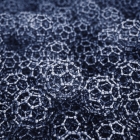Press monitoring
First functioning mini human hearts grown from stem cells
21.8.2020 | Press monitoring
Scientists have created the first-ever functional miniature human hearts in the lab. Grown from stem cells, these heart “organoids” are made up of all primary heart cell types and have functioning chambers and vasculature. They could help us understand how hearts develop and build better models for treating disease. To make these human heart...
Capsules loaded with stem cells help repair heart damage in mice
19.8.2020 | Press monitoring
Heart attacks are a leading cause of death, largely because the damage caused by one can lead to more later. Now researchers at Rice University have developed a new way to repair heart tissue and reduce scarring, by implanting capsules loaded with stem cells. When a person suffers a heart attack, the organ repairs itself as best it can, patching...
Nanoparticles to immunize plants against heat stress
17.8.2020 | Press monitoring
Civil and Environmental Engineering's Greg Lowry and his team are creating nanoparticles (NP) and NP coatings that will revolutionize the agricultural industry. Already, his research has demonstrated that NPs that are coated with the right polymers can be applied to plant leaves with 99 percent uptake – orders of magnitude more efficient than...
Third breakthrough demonstrates photosynthetic hacks can boost yield, conserve water
14.8.2020 | Press monitoring
Plants are factories that manufacture yield from light and carbon dioxide – but parts of this complex process, called photosynthesis, are hindered by a lack of raw materials and machinery. To optimize production, scientists from the University of Essex have resolved two major photosynthetic bottlenecks to boost plant productivity by 27 percent in...
Algal blue light switch control of electrical excitation in plants
12.8.2020 | Press monitoring
Optogenetics denotes the manipulation of cellular processes by light-based biological techniques. An international research team led by the Würzburg plant scientists Rainer Hedrich, Georg Nagel and Dirk Becker has succeeded in applying this method to higher plants: Light impulses can now be used to trigger electrical excitation in plants. "With...
Asian giant hornet complete genome released by the Agricultural Research Service
10.8.2020 | Press monitoring
The first complete genome of the Asian giant hornet has been released by a team of Agricultural Research Service (ARS) scientists. ARS has made the genome available to the research community in AgDataCommons and the National Center for Biotechnology Information, even before publishing the results in a scientific journal to make the data freely...
Team develops peptide that makes drug-resistant bacteria sensitive to antibiotics again
7.8.2020 | Press monitoring
Scientists at Nanyang Technological University, Singapore (NTU Singapore) have developed a synthetic peptide that can make multidrug-resistant bacteria sensitive to antibiotics again when used together with traditional antibiotics, offering hope for the prospect of a combination treatment strategy to tackle certain antibiotic-tolerant...
Testing Chernobyl fungi as a radiation shield for astronauts
5.8.2020 | Press monitoring
A team of researchers from the University of North Carolina at Charlotte and Stanford University has tested the viability of using a type of fungus found growing in some of the destroyed nuclear reactors at the former Chernobyl nuclear power plant site to shield astronauts from radiation. Without the Earth's protective atmosphere and magnetic...
XPrize launches $5-million competition for a cheap, rapid COVID-19 tests
3.8.2020 | Press monitoring
Further expanding the scope of its international competitions designed to solve global problems through technology, XPrize has launched a contest to develop new and improved testing methods for COVID-19. With millions of dollars of prize money up for grabs, the contest aims to usher in new technologies that allow for cheap, wide-spread testing...
Black swan genome could be our secret weapon to combat next pandemic
31.7.2020 | Press monitoring
Scientists have mapped the genome of the black swan in an effort to understand immune responses to the deadly 'bird flu' virus and better protect public health. The University of Queensland team, led by Dr. Kirsty Short and Ph.D. candidate Mr Anjana Karawita, sequenced the genome of black swans, a species particularly susceptible to Highly...































